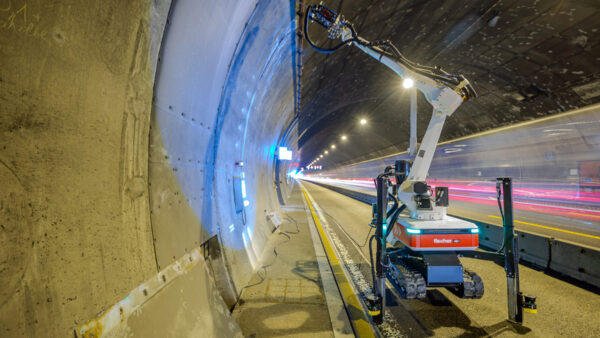Trimble tested the speed and accuracy of novice, intermediate and expert operators using conventional and machine guided excavators, and found the latter led to big improvements across the board.
The latest quarterly Commercial Construction Index (CCI) report from the US Chamber of Commerce shows construction companies still struggling to find skilled workers.Â
83% respondents reported moderate to high difficulty in finding them, with 87% expressing a moderate to high degree of concern about workers having adequate skill levels. 83% of respondents had asked their skilled crew members to do more work, and 71% reported struggling to meet schedule requirements.
One way to tackle the shortage of skilled labour is to use supporting technology used on the job site. While adoption has been steady over the years, many construction professionals are still hesitant to invest in technology, unsure of the benefit-to-cost value. Overall, the CCI report states, nearly half of the contractors plan to not raise spending on tools and equipment in the next quarter.
Integrated grade control technology
Over the years, positioning-technology innovators and construction equipment manufacturers have integrated grade control technology on excavators, dozers, motor graders, skid-steers, milling machines, pavers and other earthmoving equipment. Trimble wanted to test whether this technology in earthmoving equipment could raise productivity.
So, we carried out a study to compare the performance of operators of varying skills – novice, intermediate, and expert – using a) conventional, b) guidance-only and c) fully machine guided excavators. The results were stark.Â
Methodology
Researchers asked 16 operators to perform the simple but common task of digging a 1m wide x 15m long by 0.5m deep trench to an accuracy of plus/minus 3cm using Komatsu PC228-10 and Hyundai HX220-L excavators.
Before each trial, participants were given the same warm-up period to familiarise themselves with the machine (e.g., practicing with the controls, digging in a test trench, interacting with the Trimble Earthworks interface).
During the first trial, participants used conventional excavation methods-no design or external grade control. At intervals of the operator’s choosing, the moderator checked excavated elevations using an SPS986 receiver, providing indications of the required cut and fill values at certain locations. The trench was considered complete when a participant indicated that they had finished excavating.
In the second trial, participants excavated the same sized trench using the guidance only function of Trimble Earthworks Grade Control Platform. Participants had access to the trench design and Earthworks interface but did not have any automatic machine control.
During the last trial, participants excavated using Trimble Earthworks’ “Automatics” functionality. The machine control system includes a 2D guidance system that will dig to design elevation automatically. The operator controls the stick, and Trimble Earthworks controls the boom and bucket to stay on grade. This essentially automates the excavator operation.
As with trials 1 and 2, when complete, the moderator took measurements with a Trimble TSC7 Controller and the Trimble SPS986 GNSS Smart Antenna along the length of the trench to verify the accuracy of the excavation according to the design.
Automatics made novices 62% faster
All operators met the tolerance requirements in all three trials. However, on average, novice operators were almost 50% faster with guidance-only than conventional methods and over 62% faster with automatics as compared to conventional methods.
The study indicates that while a novice operator does not have the experience to handle a machine with the same skill as an experienced operator, guidance, and particularly automatics, can significantly improve their ability to get jobs done faster with accuracy.
Intermediates become expert
Intermediate operators were on average around 27% faster with guidance-only than conventional methods and over 38% faster with automatics as compared to conventional methods. Also, of note, intermediate operators who used automatics were comparable to expert users in guidance only (6:41 to 6:03).
Experts got even faster
It’s no surprise that expert operators performed very well in all test scenarios. They were the fastest and most accurate. But even these expert operators, who on average completed the project in 9 minutes and 56 seconds with conventional methods; cut their time almost in half (5:25) using the Automatics function.
The study numbers indicate that guidance – and particularly automatics capabilities – make a very good operator better and enable less skilled operators to perform close to intermediate and expert operators with comparable accuracy. Adding machine guidance to the technology portfolio, adds to a company’s flexibility and agility, opening up the possibility of empowering less skilled workers to step up their machine control game.
• Cas Heuvelmans is Trimble’s PR Manager for Europe






